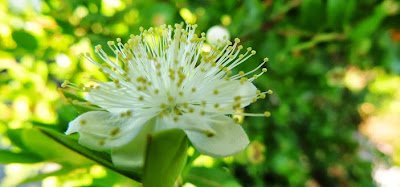Saturday, June 29, 2013
Friday, June 28, 2013
Hibiscus Flowers..
Type of Flowers
Hibiscus:
Hibiscus is a genus of flowering plants in the mallow family, Malvaceae. It is quite large, containing several hundred species that are native to warm-temperate, subtropical and tropical regions throughout the world. Member species are often noted for their showy flowers and are commonly known simply as hibiscus, or less widely known as rose mallow. The genus includes both annual and perennial herbaceous plants, as well as woody shrubs and small trees. The generic name is derived from the Greek word ἱβίσκος (hibískos), which was the name Pedanius Dioscorides (ca. 40–90) gave to Althaea officinalis.
The leaves are alternate, ovate to lanceolate, often with a toothed or lobed margin. The flowers are large, conspicuous, trumpet-shaped, with five or more petals, color from white to pink, red, orange, purple or yellow, and from 4–18 cm broad. Flower color in certain species, such as H. mutabilis and H. tiliaceus, changes with age. The fruit is a dry five-lobed capsule, containing several seeds in each lobe, which are released when the capsule dehisces (splits open) at maturity. It is of red and white colours. It is an example of complete flowers.
Thursday, June 27, 2013
Gloxinia Flowers
Type of Flowers
Gloxinia:
Gloxinia is a genus of three species of tropical rhizomatous herbs in the flowering plant family Gesneriaceae. The species are primarily found in the Andes of South America but Gloxinia perennis is also found in Central America and the West Indies, where it has probably escaped from cultivation.This Flower Meaning Love at First Sight
Gloxinia perennis is the original (type) species of the genus and for much of its history the genus consisted of only G. perennis and a very small number of other species. However, most recent references on Gloxinia reflect the 1976 classification of Hans Wiehler, who took a broad view of the genus. A recent analysis of Gloxinia and related genera based on molecular and morphological work has determined that Wiehler's circumscription of the genus was unnatural, both phylogenetically and morphologically. The analyses demonstrated that the genera Anodiscus and Koellikeria, each with a single species, were more closely related to Gloxinia perennis than were any of the other species included in Gloxinia by Wiehler, several of which proved to be more closely related to other genera (particularly Diastema, Monopyle, and Phinaea). As a result of this work, most of the species have been transferred to other genera while Koellikeria erinoides and Anodiscus xanthophyllus have been transferred into a much more narrowly defined Gloxinia consisting of only three species, all of them characterized by having a raceme-like flowering stem. The other species have been transferred to the existing genus Monopyle, the resurrected genera Mandirola and Seemannia, and the new genera Gloxinella, Gloxiniopsis, Nomopyle, and Sphaerorrhiza. Gloxinia perennis forms fertile hybrids with species of Seemannia, which was the primary reason for uniting the two genera.
Sinningia speciosa, a popular houseplant, was originally described and introduced to cultivation as Gloxinia speciosa and is still commonly known as "gloxinia".
Subscribe to:
Posts (Atom)

































































